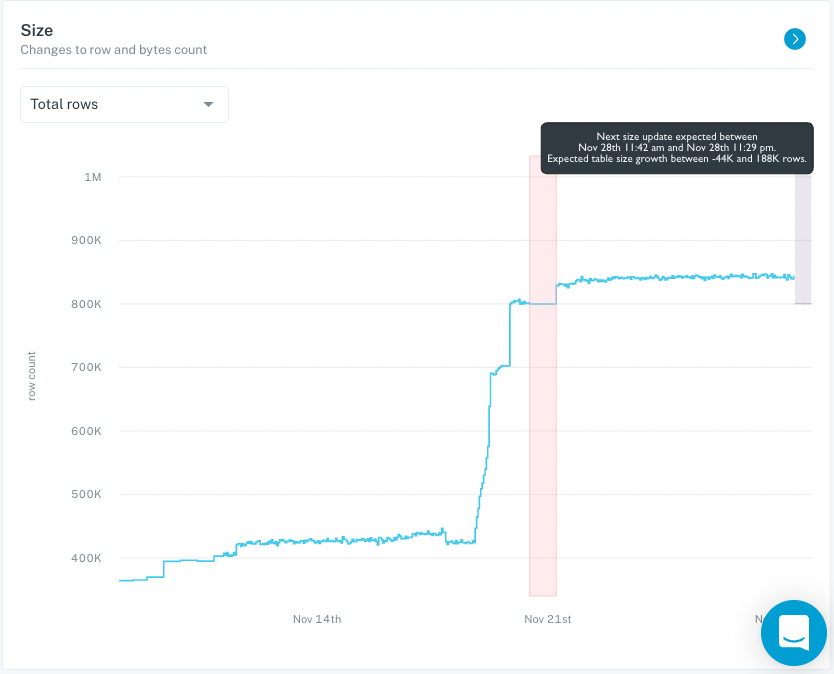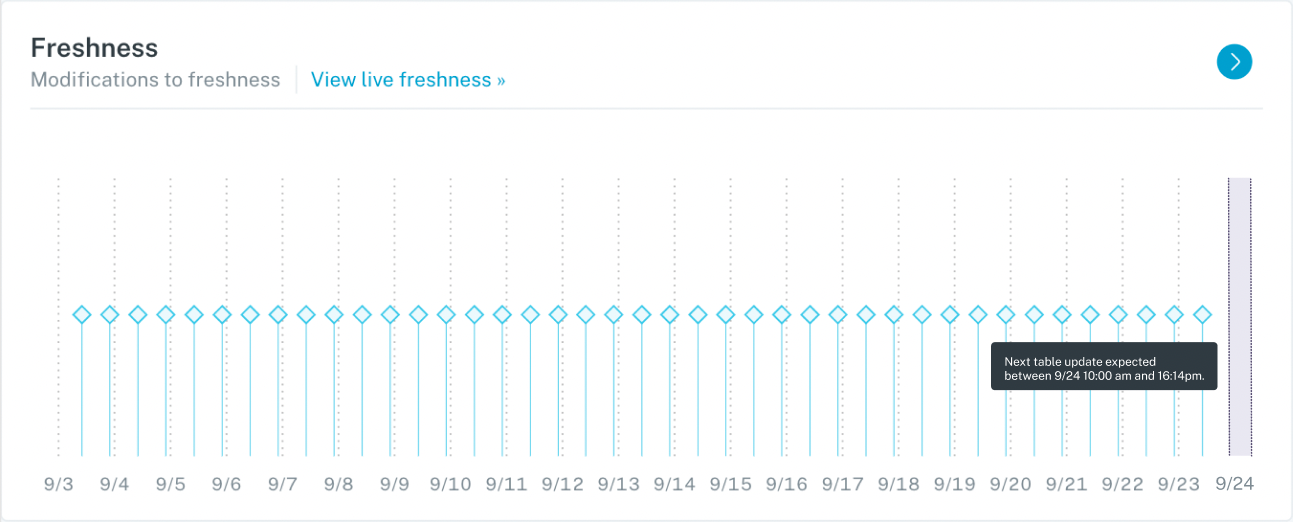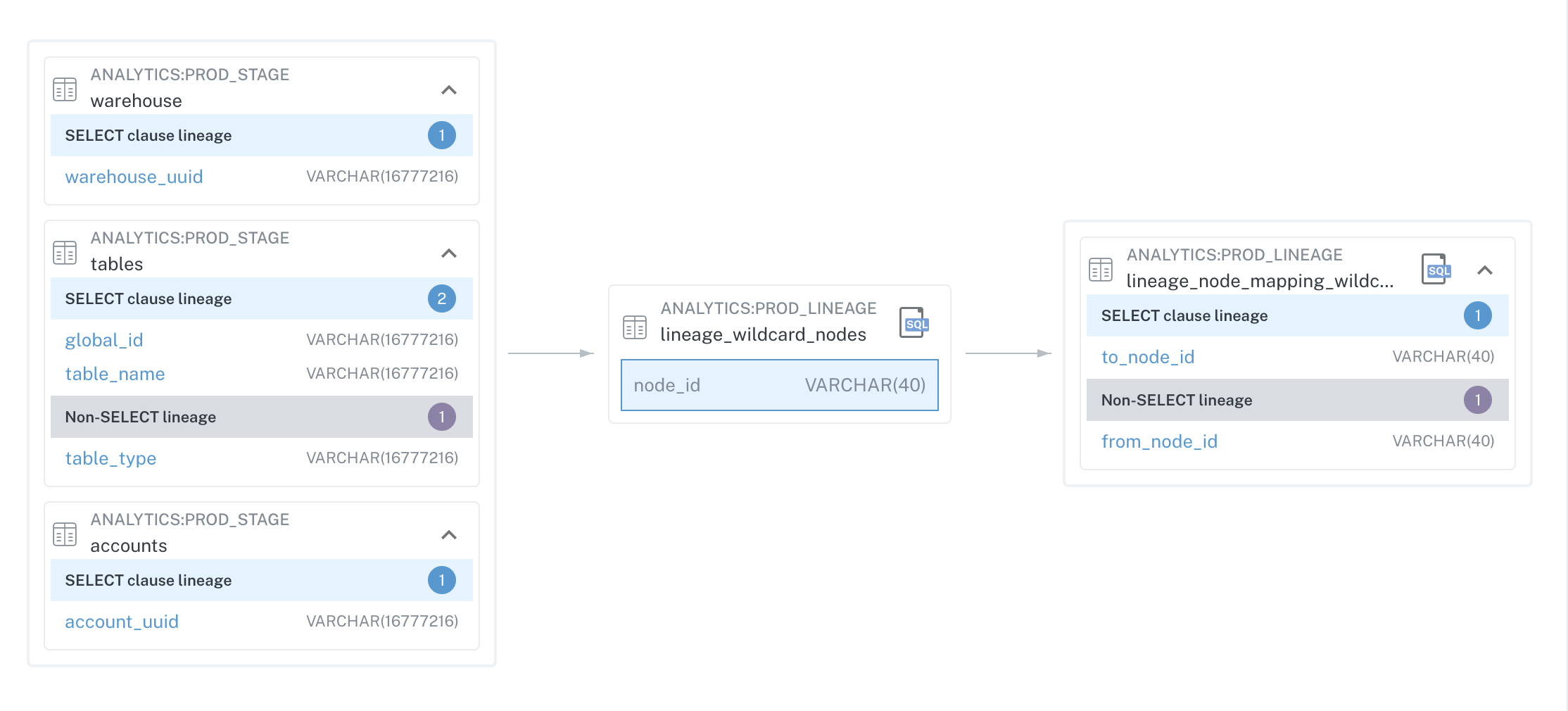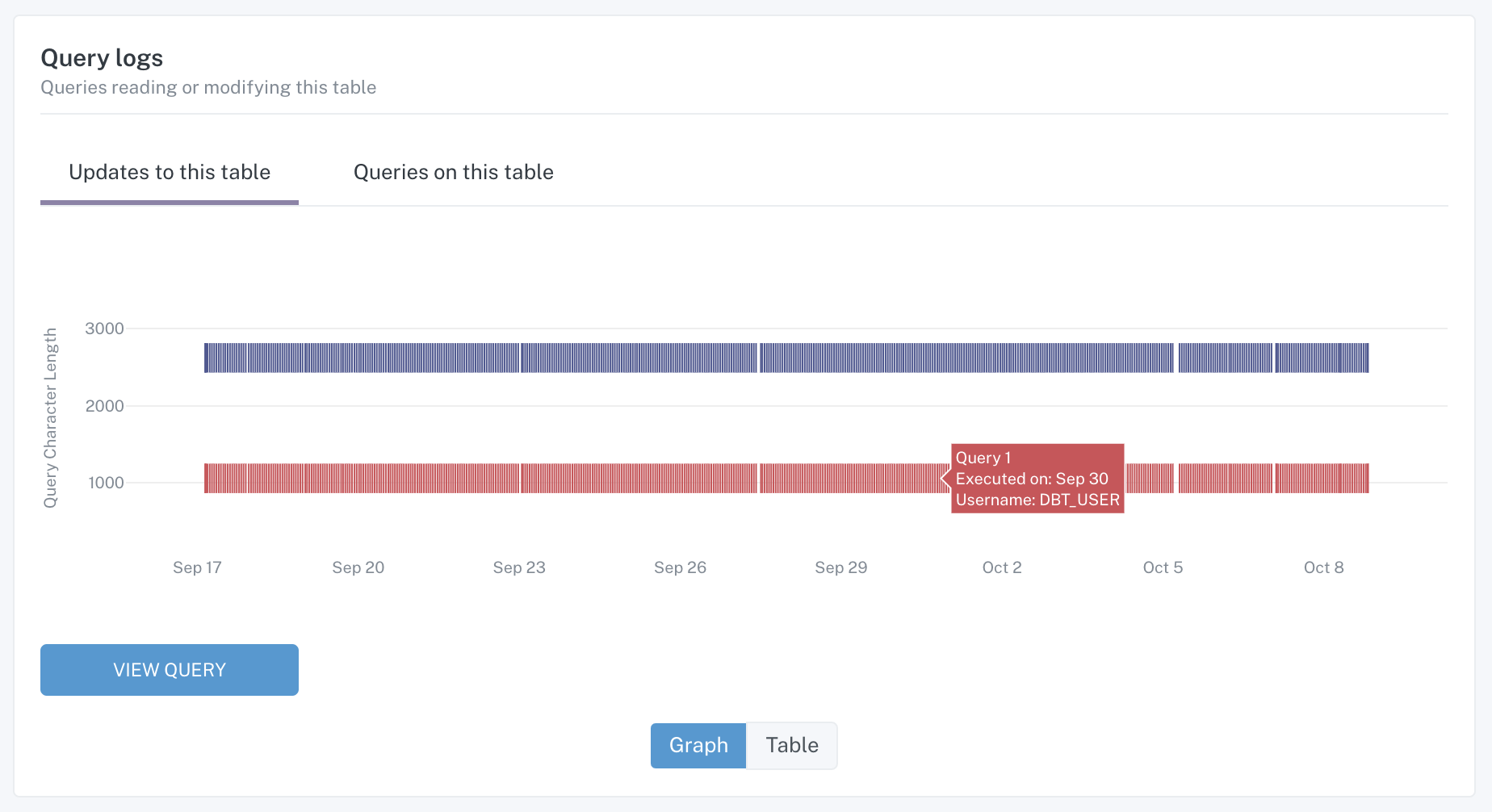
The past two weeks have been full of exciting developments!
What's new
- Mode Integration: A light-weight Mode integration is now supported! Any Mode dashboards that customers have are automatically included as an object in Catalog and as part of table lineages.
- Volume monitor thresholds for next update & expected size: Added visual thresholds to Size graphs which show when our anomaly detection models expect the next update to occur as well as the expected table size growth.
- Granular anomaly type filtering: The all-encompassing "anomalies" label in notification settings route filter, incident list filter, and incident titles are now broken down to 4 granular types: freshness anomaly, volume anomaly, dimension anomaly, and field health anomaly.
- User Tagging via Notifications: added instructions for tagging Slack users via custom message in the notification setting workflow.
- Faster new pattern detection for Freshness: our freshness anomaly detection ML models are now able to detect a pattern shift within the 3 week training window.
Improvements and fixes
- Field lineage temp table support: temp tables generated via dbt are now resolved into final destination tables in field level lineage graphs.
- Improved monitors filtering: In the Creator column of the custom monitors list, added option to filter based on monitor creation - via UI v.s. via Monitor as Code. Also added ability to filter for one type of monitor by clicking on the color chip.
- Field health metrics navigation: Users can now click on the right arrow button on field health incident card or Incident IQ to navigate to the monitors details view for the relevant field and metric.
- SSO setup improvement: Instead of immediately disabling all password users when SSO is added to an account, we now wait until the first successful SSO login from a user from an account, to allow for smoother transition from password to SSO logins
- Warehouse connection test: Users can now go to Settings -> Integrations to test existing warehouse connections.
- Data Governance dashboard: a fully interactive version of this Looker dashboard can now be recreated for customers using Snowflake data share.
- Field Search in Catalog: users are now able to search for fields in the Field Lineage section of the Catalog page.
What's next
- MS Teams Integration: Incident communications via Microsoft Teams will be supported very soon.
- Spark lineage: For our Spark customers, we're working on launching lineage which will allow you to map how queries interact to form lineage.
- Circuit Breakers: Trigger Monte Carlo data quality checks and validate incidents with code to stop problematic jobs before they pass data downstream.



